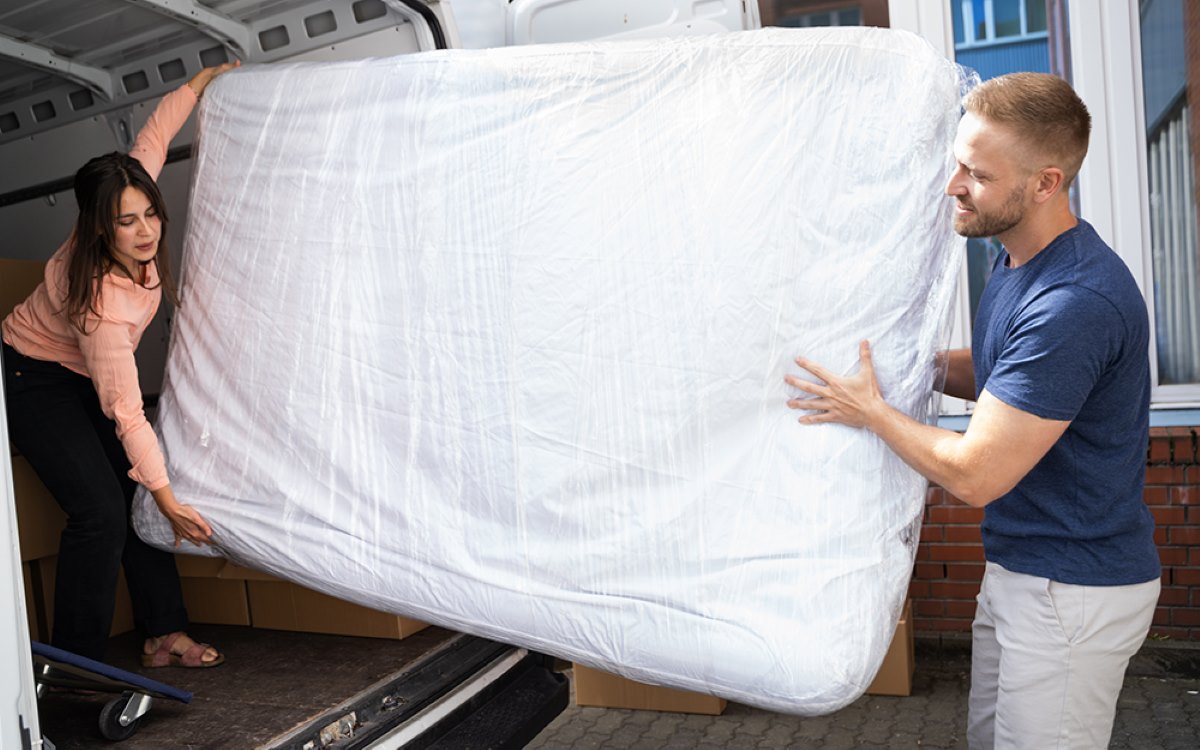

Articles
How To Store A Foam Mattress
Modified: February 17, 2024
Discover the best way to store your foam mattress with our helpful articles. Keep your mattress in optimal condition and extend its lifespan.
(Many of the links in this article redirect to a specific reviewed product. Your purchase of these products through affiliate links helps to generate commission for Storables.com, at no extra cost. Learn more)
Introduction
When it comes to storing a foam mattress, proper care and precautions are necessary to maintain its quality and prolong its lifespan. Whether you’re moving to a new house, temporarily downsizing, or simply need to store your mattress for a while, following the right steps will help ensure its condition remains intact.
A foam mattress is a valuable investment that provides comfort and support for a good night’s sleep. It is important to take the necessary measures to protect it from damage, dirt, moisture, and pests when storing it.
In this article, we will guide you through the step-by-step process of storing a foam mattress to ensure its longevity and keep it in optimal condition. By following these guidelines, you can rest easy knowing your mattress will be ready for use whenever you need it again.
Key Takeaways:
- Properly storing a foam mattress involves thorough cleaning, removing bedding, vacuuming, spot cleaning stains, and allowing it to dry before covering and storing in a dry, cool location. Regular checks ensure its longevity.
- Choosing the right storage location, keeping the mattress elevated, and avoiding heavy items on top are crucial for preserving the quality and integrity of a foam mattress during storage. Regular checks and proper care ensure its readiness for future use.
Read more: How To Store Foam Mattress
Step 1: Clean the Mattress
The first step in preparing your foam mattress for storage is to clean it thoroughly. This will help remove any dirt, dust, or stains that may have accumulated over time. Follow these steps to clean your mattress:
- Remove all bedding: Start by stripping off all the bedding, including sheets, mattress covers, and pillows. Give them a thorough wash and set them aside for future use.
- Vacuum the mattress: Use a vacuum cleaner with a brush attachment to remove any loose dirt or debris from the mattress surface. Make sure to vacuum all sides, including the top, bottom, and sides of the mattress. Pay extra attention to any crevices or areas where dirt might have accumulated.
- Spot clean any stains: If you notice any stains on the mattress, use a mild detergent or upholstery cleaner to spot clean them. Avoid using harsh chemicals or bleach, as they may damage the foam material. Gently blot the stains with a clean cloth or sponge and let the area dry completely before moving on to the next step.
- Allow the mattress to dry: After spot cleaning, it’s important to let the mattress air dry completely. This will prevent any moisture from getting trapped inside the mattress during storage, which could lead to mold or mildew growth. You can speed up the drying process by placing the mattress in a well-ventilated area or using a fan.
Once your foam mattress is thoroughly cleaned and completely dry, it will be ready for the next step in the storage process.
Step 2: Remove the Bedding
Before storing your foam mattress, it is essential to remove all bedding to prevent moisture and odors from becoming trapped. Follow these steps to properly remove the bedding:
- Take off all sheets, covers, and mattress protectors: Start by removing all sheets, pillowcases, blankets, and duvet covers from the mattress. These items can harbor moisture, dust, and odors, which can seep into the foam if left on during storage.
- Wash the bedding: Once the bedding is removed, it’s a good idea to wash everything before storing it. Follow the care instructions for each item and use a mild detergent. Make sure to dry the bedding thoroughly before folding or packing it away.
- Separate pillows and accessories: If you have pillows, pillowcases, or any other accessories used with the mattress, separate them from the bedding and wash them separately. Properly cleaning and storing these items will help maintain their freshness and quality.
- Store bedding separately: Once the bedding is clean and dry, store it separately from the foam mattress. Use vacuum-sealed bags or plastic bins to protect the bedding from dust, moisture, and pests. Label the containers for easy identification when you need to access them in the future.
By removing and properly storing the bedding, you not only keep it clean and fresh but also prevent any potential damage or unpleasant odors from transferring to the foam mattress during storage.
Step 3: Vacuum the Mattress
Vacuuming the foam mattress before storing it is an important step to remove any remaining dirt, dust, and allergens. Follow these guidelines to thoroughly vacuum your mattress:
- Prepare your vacuum: Make sure your vacuum cleaner has a clean and functioning brush attachment. This attachment is gentle enough to clean the mattress without causing any damage to the foam.
- Vacuum all sides: Start by vacuuming the top side of the mattress, using long, sweeping motions to capture any loose debris. Move slowly across the surface to ensure thorough cleaning. Then, flip the mattress and repeat the process on the other side. Don’t forget to vacuum the edges and corners as well.
- Pay attention to crevices: Use the crevice tool or a smaller attachment to reach any crevices or areas that are difficult to access with the larger brush attachment. This will help remove any accumulated dirt or dust from these tight spaces.
- Focus on stains or spills: If you notice any remaining stains or spills on the mattress, go over them gently with the brush attachment or a clean cloth to lift any residual dirt or residue.
- Repeat if necessary: Depending on the condition of your mattress, you may need to repeat the vacuuming process to ensure thorough cleanliness. This is especially important if you have pets or allergies.
Vacuuming the foam mattress before storage helps maintain its cleanliness and ensures you won’t be placing a dirty mattress back into use in the future.
Step 4: Spot Clean Any Stains
Spot cleaning any stains on your foam mattress is crucial to prevent them from setting and causing permanent damage. Follow these steps to effectively spot clean stains:
- Identify the stains: Inspect the mattress for any visible stains or spills. Common types of stains include food and beverage spills, blood, urine, or sweat stains.
- Use a mild cleaning solution: Mix a small amount of mild detergent or upholstery cleaner with water to create a cleaning solution. Avoid using harsh chemicals or bleach, as they can damage the foam material.
- Gently blot the stain: Dip a clean cloth or sponge into the cleaning solution and gently blot the stain, working from the outside in. Avoid rubbing the stain vigorously, as this can spread the stain further or push it deeper into the foam.
- Rinse the area: After blotting the stain, rinse the cloth or sponge with clean water and gently blot the area again to remove any residual cleaning solution. This step will help prevent any soap residue from attracting dirt or causing discoloration.
- Dry the area: Use a clean, dry cloth or towel to absorb any excess moisture from the spot-cleaned area. Allow the mattress to air dry completely before proceeding to the next step.
- Repeat if necessary: For stubborn stains, you may need to repeat the spot cleaning process multiple times. Be patient and persistent, but avoid saturating the foam with excessive moisture.
Spot cleaning stains on your foam mattress will keep it fresh and preserve its appearance during storage. Remember to take immediate action when spills or accidents occur to prevent stains from setting in.
Read more: How To Store Memory Foam Mattress
Step 5: Allow the Mattress to Dry
After spot cleaning any stains or spills, it’s crucial to allow your foam mattress to dry thoroughly before storing it. Proper drying prevents the growth of mold, mildew, and unpleasant odors. Follow these steps to ensure your mattress is completely dry:
- Air out the mattress: Place the mattress in a well-ventilated area, preferably outdoors or near an open window. This allows for better air circulation and helps expedite the drying process.
- Use a fan or dehumidifier: To speed up the drying process, use a fan or dehumidifier in the room. These appliances help remove excess moisture from the air, reducing the drying time for your mattress.
- Flip the mattress: After a few hours, flip the mattress to expose the other side to fresh air. This ensures both sides of the mattress get equal drying time and prevents any trapped moisture from lingering.
- Check for dampness: Periodically check the mattress for any signs of dampness. If you feel any dampness or moisture, continue the drying process until the mattress is completely dry to the touch.
- Avoid direct sunlight: While you want to air out the mattress, it’s essential to avoid direct sunlight. Prolonged exposure to sunlight can cause discoloration and damage to the foam material. Instead, place the mattress in a shaded area.
Allowing your foam mattress to dry completely ensures that it is in the best possible condition before storage. Taking the time to dry it properly will help prevent any potential mold or mildew growth, keeping your mattress fresh and ready for future use.
Store your foam mattress in a cool, dry place away from direct sunlight and moisture. Avoid bending or folding the mattress to prevent damage to the foam. Use a mattress bag for protection if storing for an extended period.
Step 6: Protect the Mattress with a Cover
Protecting your foam mattress with a cover is essential to safeguard it from dust, dirt, moisture, and potential damage during storage. Follow these steps to properly cover your mattress:
- Choose a mattress cover: Select a mattress cover specifically designed for foam mattresses. Look for one that is waterproof, breathable, and made of a durable material such as polyethylene or vinyl.
- Measure the mattress: Take accurate measurements of your foam mattress to ensure you choose the right size cover. A well-fitting cover will provide proper protection and prevent any unnecessary shifting or bunching.
- Place the mattress in the cover: Lay the mattress flat on the floor or a clean surface. Carefully slide the mattress into the cover, making sure it is centered and fits snugly. Smooth out any wrinkles or folds in the cover.
- Secure the cover: Most mattress covers come with zippered closures or strong elastic bands to secure the cover in place. Close the zipper or tightly tuck in the elastic to ensure the cover remains intact during storage.
- Double-check for proper coverage: Once the cover is secured, check that it fully covers the mattress from top to bottom. Make sure there are no gaps or exposed areas that could allow dust, dirt, or pests to enter.
- Label the cover: To help identify the mattress easily when needed, attach a label to the cover indicating its size, date of storage, or any other relevant information that will assist in retrieval.
By covering your foam mattress with a protective cover, you will shield it from potential damage and keep it clean and fresh throughout the storage period. This step adds an extra layer of defense to preserve the quality of your mattress.
Step 7: Store the Mattress in a Dry and Cool Location
Choosing the right storage location for your foam mattress is crucial to maintain its integrity and protect it from damage. Follow these steps to find the ideal storage spot:
- Select a dry area: Look for a storage location that is dry and free from excessive humidity. Moisture can seep into the foam mattress and cause mold or mildew growth, leading to potential damage.
- Avoid areas prone to temperature fluctuations: Extreme temperature changes can affect the structure and quality of the foam material. Avoid storing the mattress in locations that experience extreme heat or cold, such as attics or garages.
- Consider climate-controlled storage: If possible, opt for a climate-controlled storage unit. These units maintain a stable temperature and humidity level year-round, providing optimal conditions for storing your foam mattress.
- Elevate the mattress: Place your foam mattress on a raised surface or pallet to prevent it from coming into direct contact with the floor. This helps minimize the risk of moisture absorption from the ground.
- Leave some space around the mattress: Avoid tightly packing the storage area around the mattress. Allow for some air circulation to prevent the buildup of moisture and ensure the mattress remains fresh during its time in storage.
- Protect the mattress from pests: Use pest-control methods such as mothballs or cedar blocks to deter insects and rodents from nesting in or near the mattress. Ensure the storage area is clean and free from any potential food sources for pests.
- Avoid stacking heavy items on top: Refrain from placing heavy objects or other items on top of the mattress during storage. This can exert pressure on the foam, potentially damaging its structure or causing deformities.
By storing your foam mattress in a dry and cool location, you can ensure its longevity and protect it from potential damage. Taking these precautions will help preserve its quality during the storage period.
Step 8: Keep the Mattress Elevated
Keeping your foam mattress elevated during storage is essential to preserve its shape and prevent any potential damage. Follow these steps to ensure your mattress remains in optimal condition:
- Use a mattress foundation or platform: Place your foam mattress on a sturdy and supportive foundation or platform. This helps distribute the weight evenly and prevents sagging or misshaping of the foam over time.
- Avoid storing the mattress on the floor: Directly placing the mattress on the floor can expose it to moisture, pests, and uneven surfaces. Elevating the mattress helps maintain its quality and airflow.
- Consider using bed risers: If you’re storing the mattress in a limited space, you can use bed risers to elevate the entire bed frame. This provides additional storage space underneath while keeping the mattress safely elevated.
- Check the weight capacity: Ensure that the foundation or platform you’re using can support the weight of the mattress. Refer to the manufacturer’s instructions or guidelines for the specific weight capacity requirements.
- Inspect for stability: Before placing the mattress on the foundation or platform, check for stability. Ensure there are no loose screws, broken slats, or any other issues that could compromise the support of the mattress.
- Reinforce if necessary: If you notice any areas of the foundation or platform that need reinforcement, make the necessary repairs or adjustments to ensure stability. This will help maintain the proper alignment of the mattress.
By keeping your foam mattress elevated on a sturdy foundation or platform, you can preserve its shape and integrity during storage. This step is essential for maintaining a comfortable and supportive sleep surface when you’re ready to use the mattress again.
Read more: How To Store A Foam Mattress Topper
Step 9: Avoid Storing Heavy Items on Top of the Mattress
One crucial precaution when storing a foam mattress is to avoid placing heavy items on top of it. This helps prevent unnecessary pressure and potential damage to the mattress. Follow these guidelines to ensure the safety of your mattress:
- Clear the storage area: Make sure the area surrounding the mattress is free from any heavy objects or clutter. This eliminates the risk of items accidentally falling or placing undue weight on the mattress.
- Do not stack other mattresses on top: Avoid stacking additional mattresses or bulky items on top of the foam mattress. The weight from above can compress the foam and lead to deformities or structural damage.
- Avoid placing furniture on the mattress: Refrain from using your foam mattress as a surface for storing furniture or heavy items. The uneven weight distribution can cause the foam to sink or lose its shape over time.
- Keep the mattress storage exclusive: Dedicate the storage area solely for the mattress. This prevents any accidental stacking or piling of objects, ensuring that the foam mattress remains undisturbed and protected.
- Consider separate storage containers: If you need to store other items alongside the mattress, use separate storage containers or compartments. This ensures that the weight is evenly distributed and prevents any potential damage to the mattress.
- Check the storage area periodically: Regularly inspect the storage area to ensure that no heavy items have been placed on top of or around the mattress. This allows you to address any issues promptly and avoid any potential damage.
By avoiding the placement of heavy items on top of your foam mattress during storage, you can protect it from unnecessary stress and maintain its shape and integrity for future use.
Step 10: Check on the Mattress Periodically
Checking on your foam mattress periodically while it’s in storage is essential to ensure its condition and address any potential issues promptly. Follow these steps to keep an eye on your mattress:
- Set a reminder: Create a schedule to remind yourself to check on the mattress regularly. Depending on the storage duration, it is recommended to check at least every 3-6 months.
- Inspect for signs of damage: Carefully examine the mattress for any signs of damage, such as tears, discoloration, or mold growth. Promptly address any issues to prevent further deterioration.
- Check for pests: Look for any signs of pest infestation, such as droppings, trails, or insect activity. Take appropriate measures to eliminate pests and protect your mattress from damage.
- Assess the storage conditions: Evaluate the storage area for any changes in temperature, humidity, or potential water leaks. Adjust the storage environment if necessary to maintain optimal conditions.
- Reposition the mattress: If possible, rotate or flip the mattress during each check-in. This helps ensure even distribution of weight and prevents the development of permanent indentations.
- Keep it clean: If you notice any dust or dirt accumulation, gently vacuum the surface of the mattress using a soft brush attachment. This helps maintain cleanliness and freshness.
- Ensure the cover and protection: Check the mattress cover for any tears or damages. Replace it if needed to maintain proper protection against dust, debris, and pests.
Regularly monitoring your foam mattress allows you to address any issues promptly, ensuring its longevity and quality. By checking on the mattress periodically, you can have peace of mind knowing that it is well-maintained during its storage period.
Conclusion
Properly storing a foam mattress is a crucial step in maintaining its quality and prolonging its lifespan. By following the steps outlined in this article, you can ensure that your mattress remains clean, dry, and in optimal condition throughout its time in storage.
Start by cleaning the mattress thoroughly, removing all bedding, and vacuuming to remove any dirt or debris. Spot clean any stains and allow the mattress to dry completely before covering it with a protective mattress cover. Choose a suitable storage location, keeping the mattress elevated and avoiding the placement of heavy items on top. Check on the mattress periodically to address any potential issues and maintain its integrity.
Remember, taking the time to store your foam mattress properly will pay off in the long run. It will be ready for use whenever you need it again, providing you with a comfortable and restful sleep experience.
By following these steps, you can ensure that your foam mattress remains in excellent condition and enjoys a longer lifespan. Properly stored, your foam mattress will be ready to provide you with many more nights of comfortable and rejuvenating sleep in the future.
Frequently Asked Questions about How To Store A Foam Mattress
Was this page helpful?
At Storables.com, we guarantee accurate and reliable information. Our content, validated by Expert Board Contributors, is crafted following stringent Editorial Policies. We're committed to providing you with well-researched, expert-backed insights for all your informational needs.
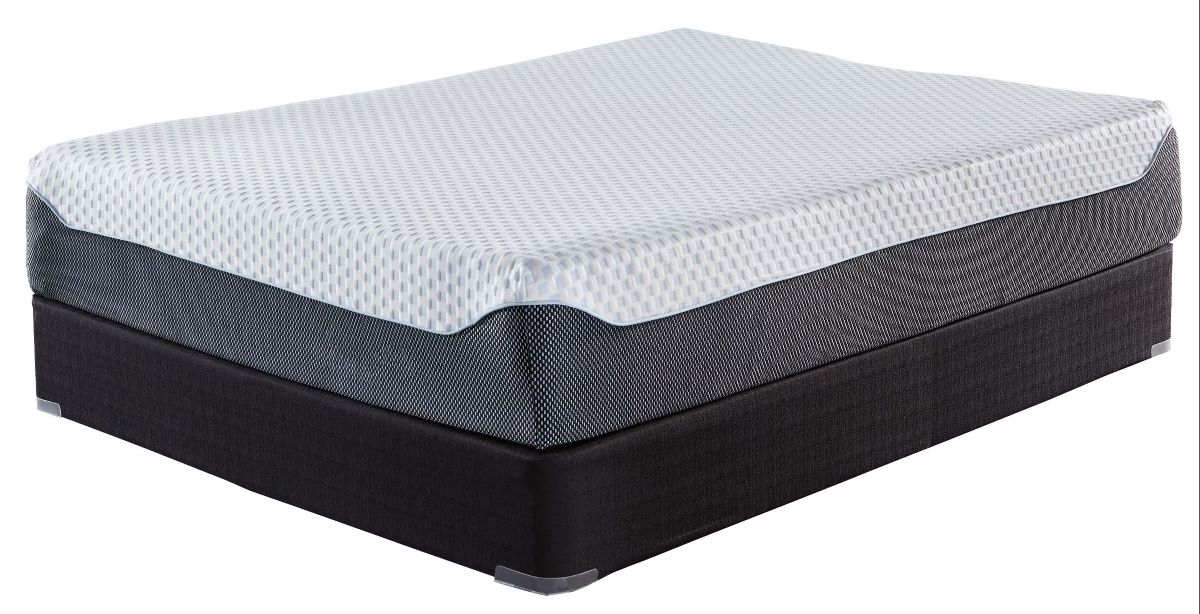
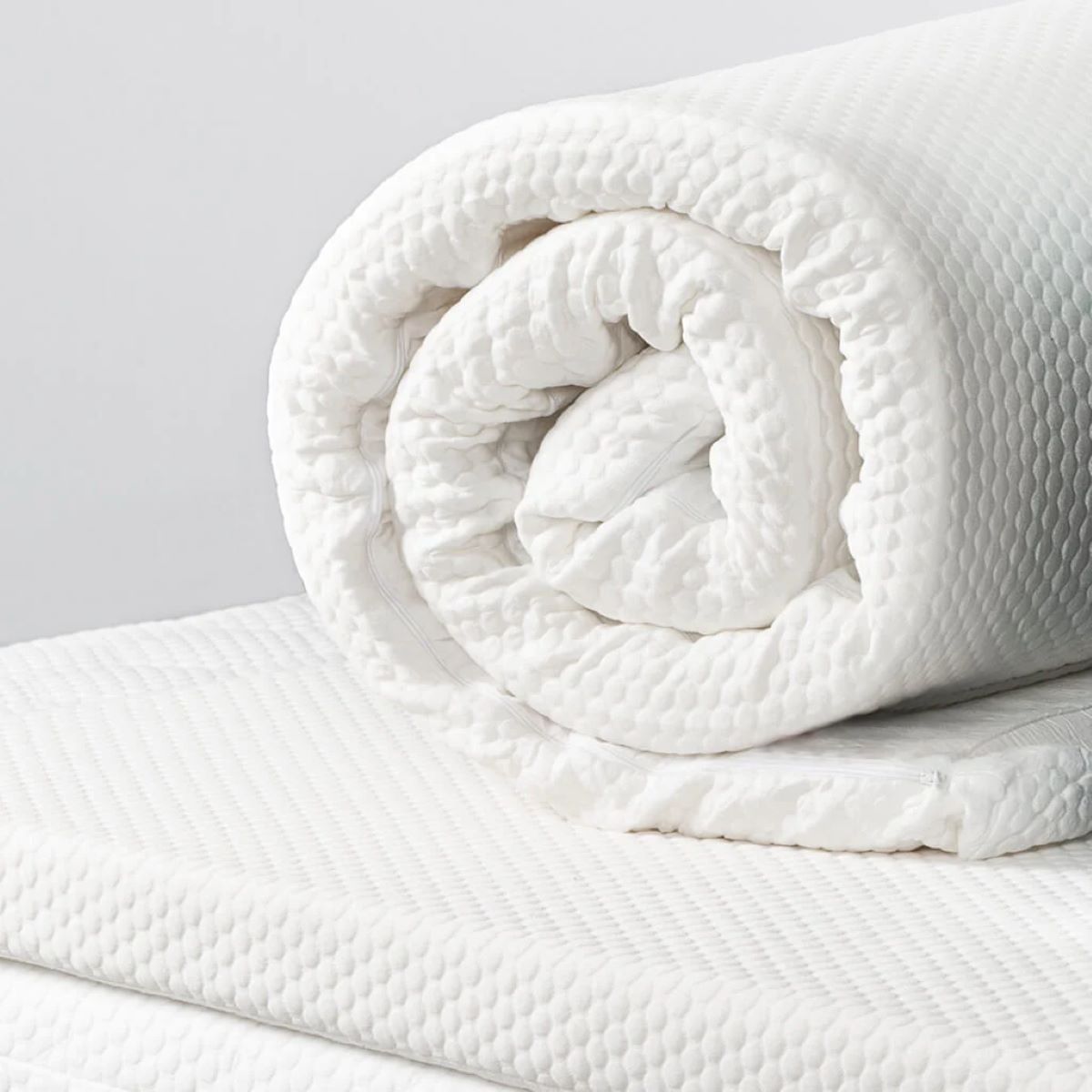
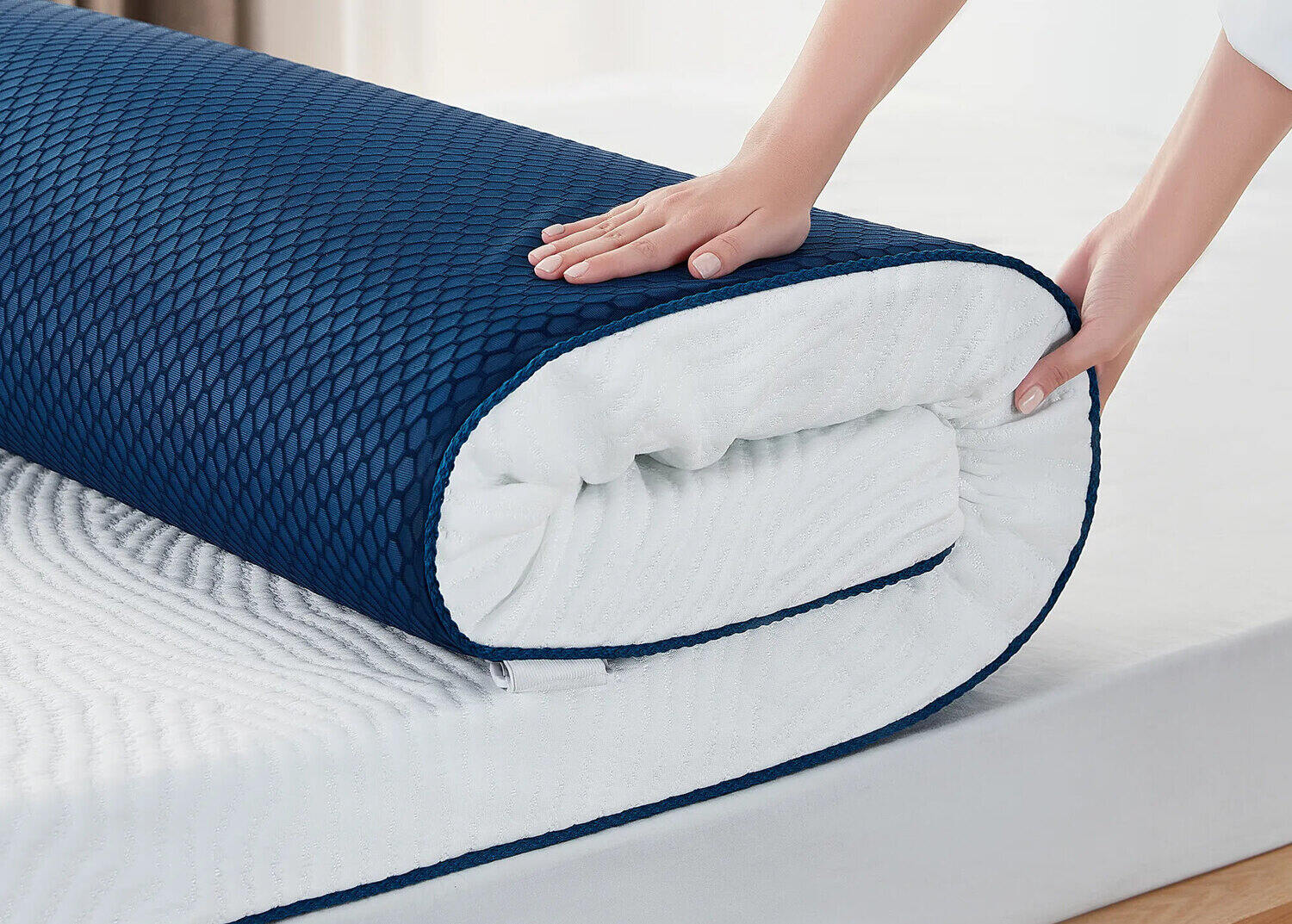

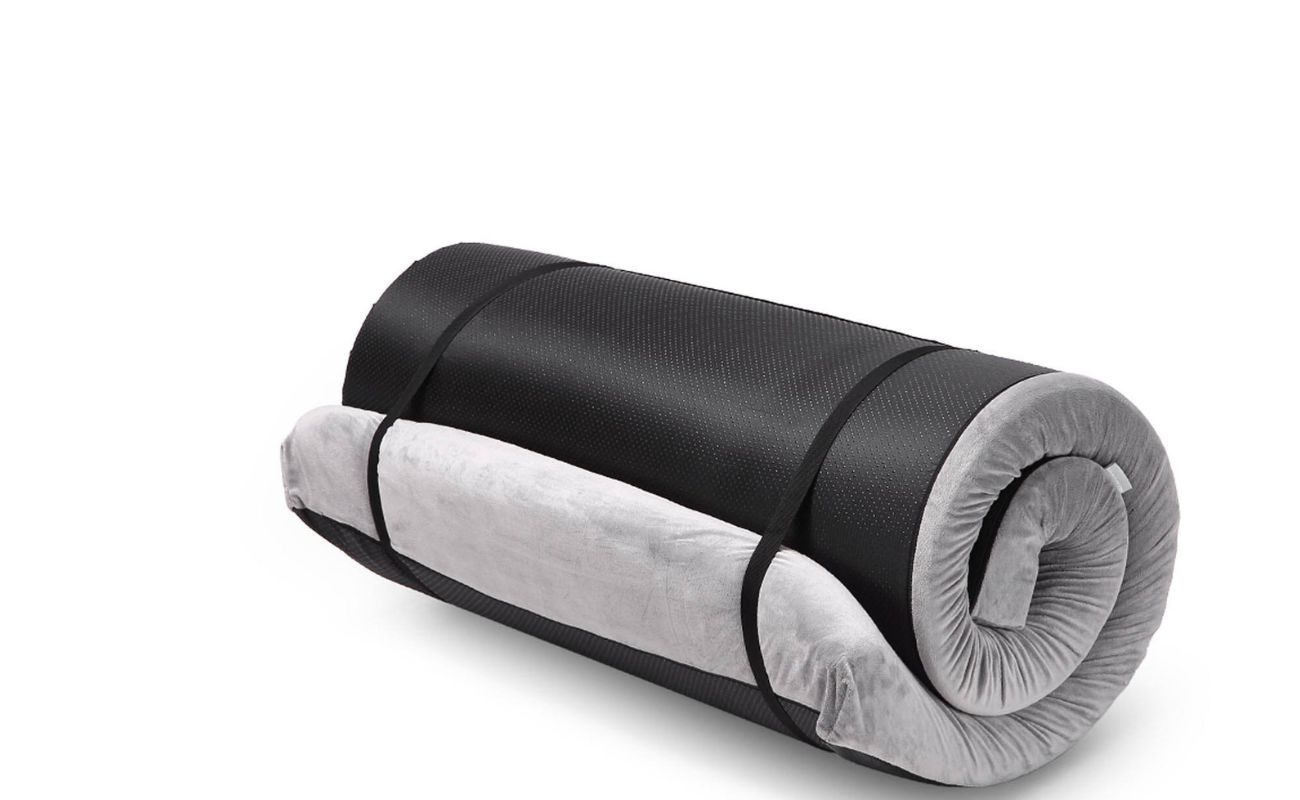
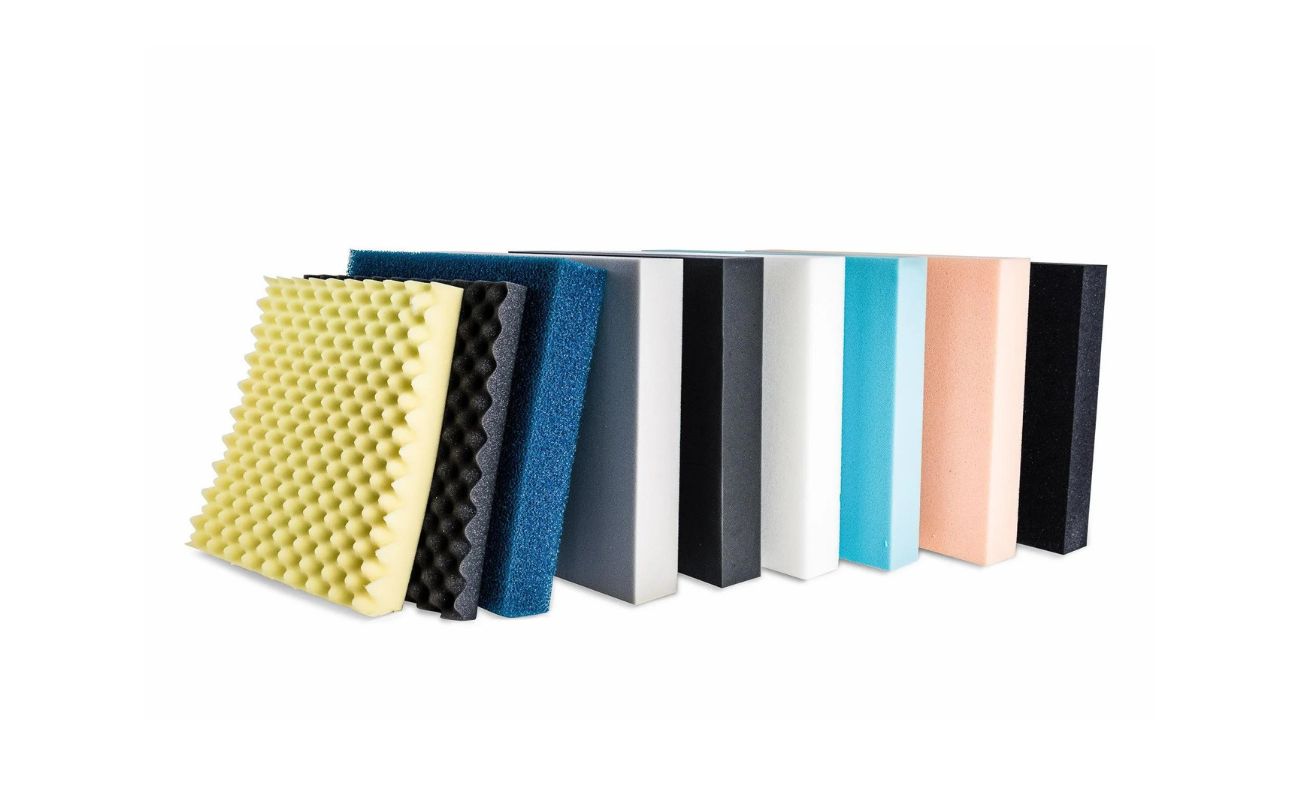
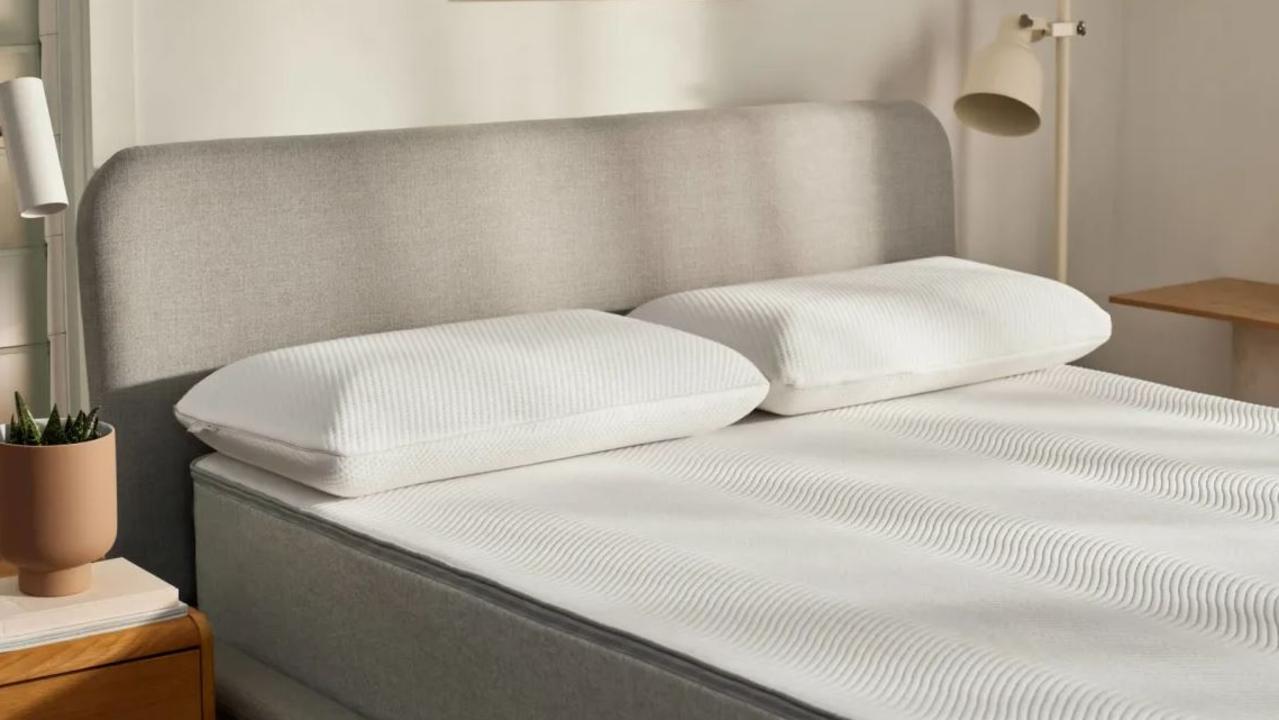
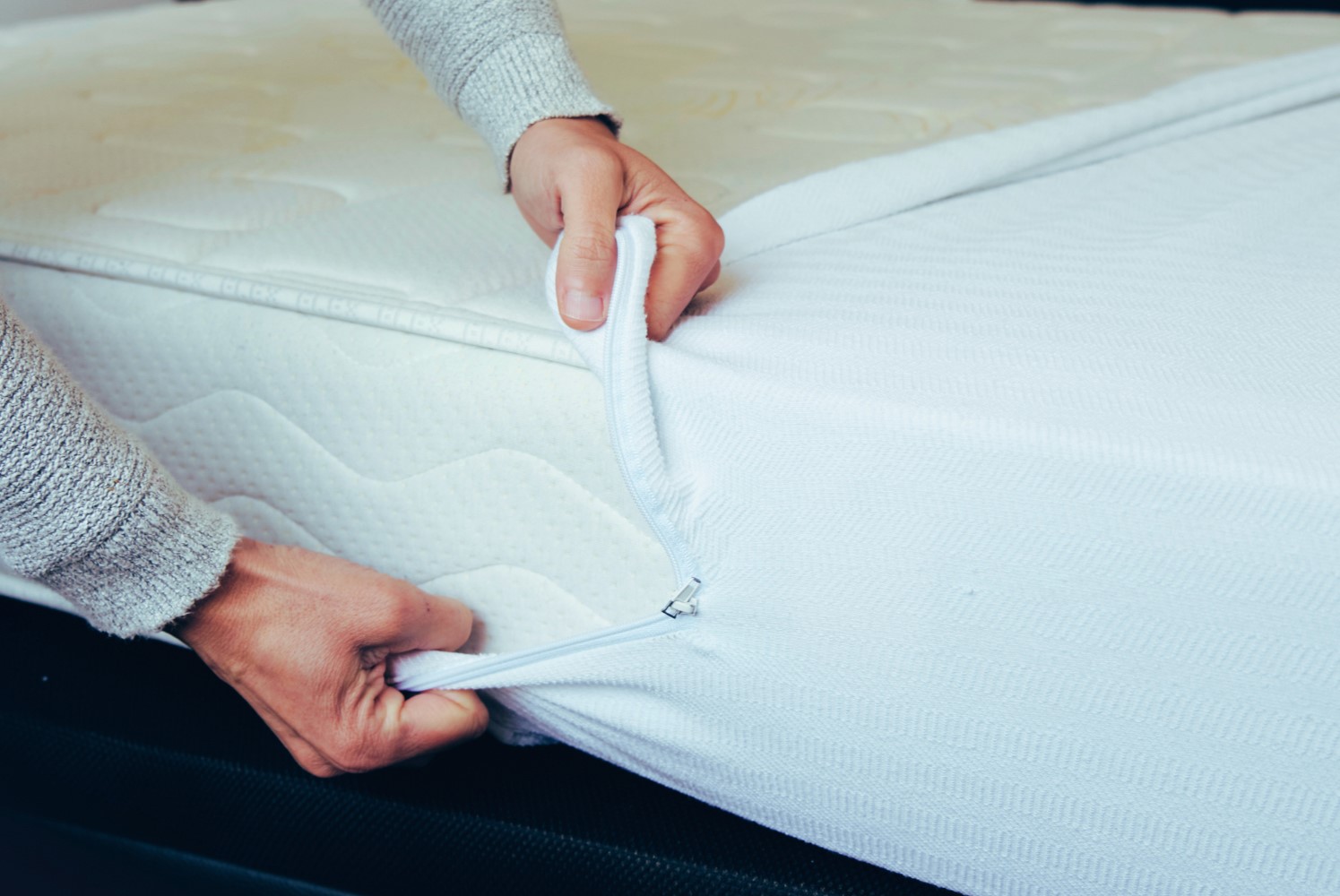
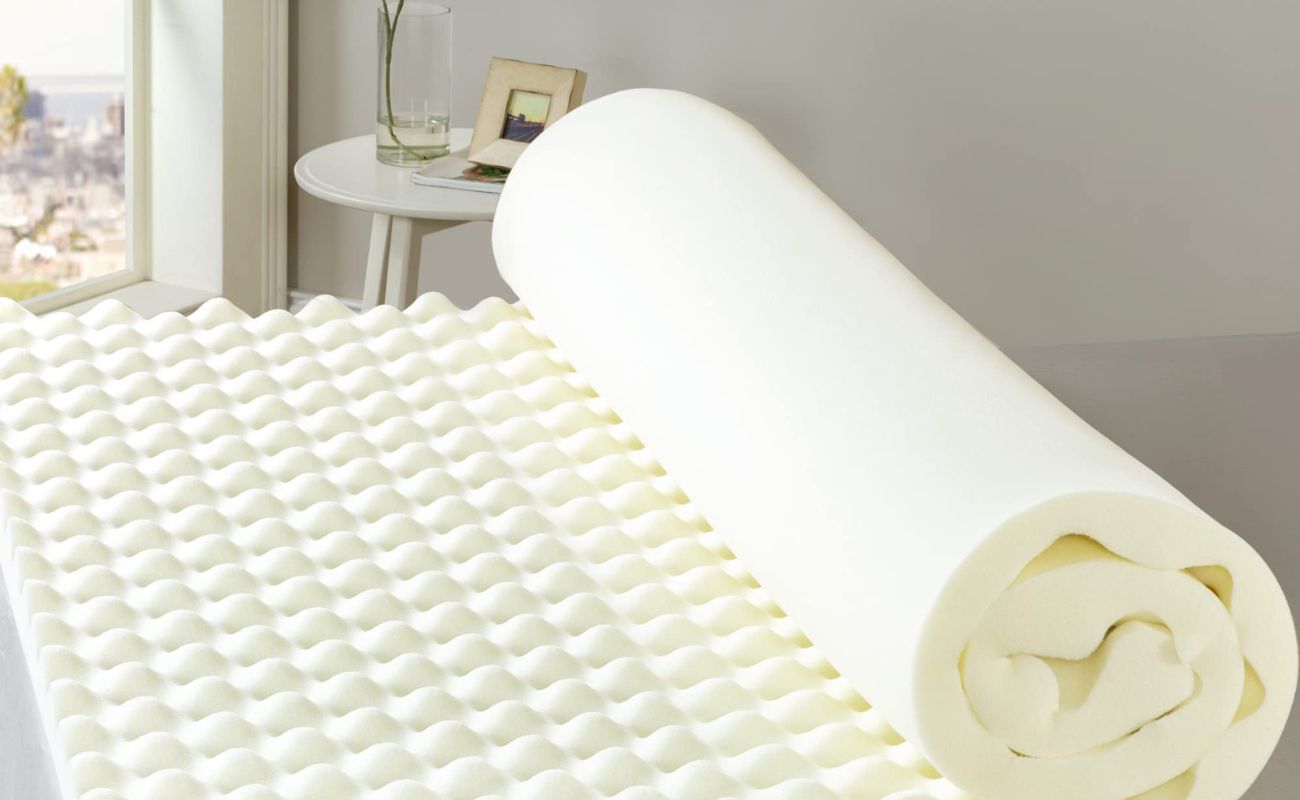

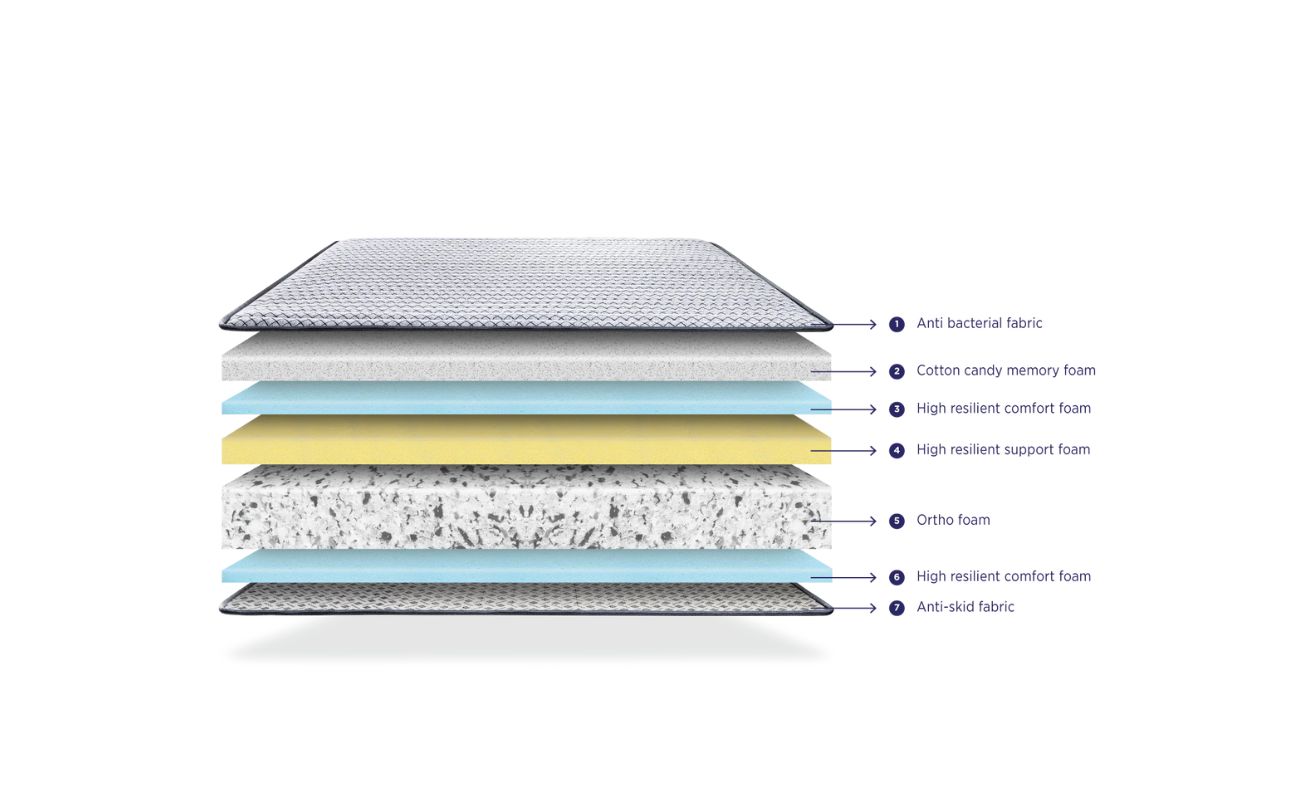

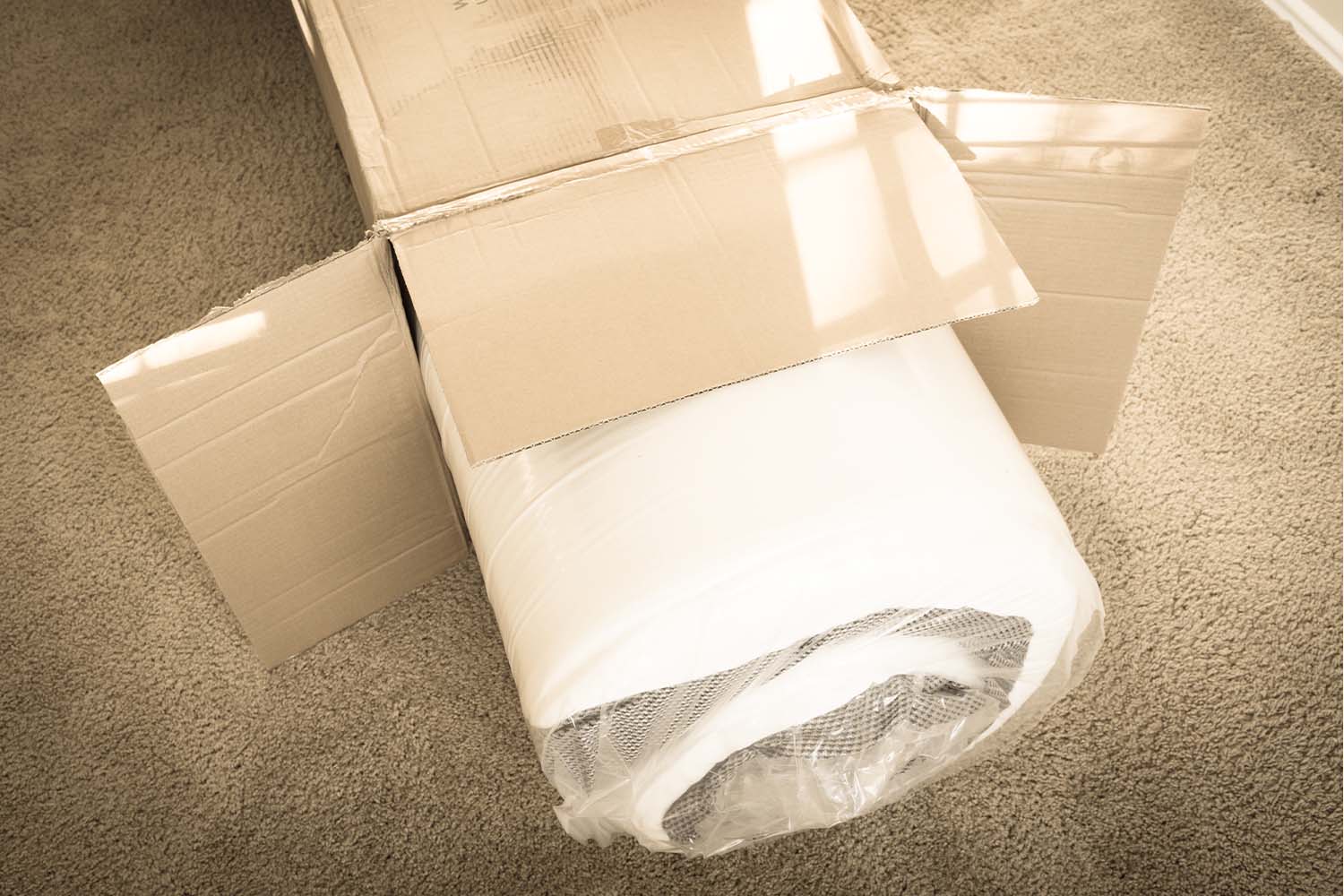

0 thoughts on “How To Store A Foam Mattress”